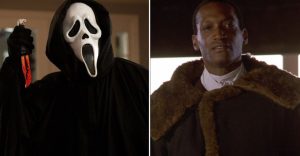Manga’s First Trans Character Debuted Decades Before Marvel or DC’s

Warning: contains discussions of transphobia
With both Marvel and DC more willing than ever to introduce transgender characters, there have been increasing comparisons to how LGBTQ characters are portrayed in manga. Though it’s always tempting to look at popular shonen manga such as Dragon Ball, Naruto, or My Hero Academia and conclude that the medium has far less representation than its western equivalent, that’s only taking a narrow view. As a matter of fact, the very first trans manga character debuted in the 1970’s, almost two decades before either Marvel or DC’s first trans characters.
While it might be tempting to view the emergence of queer characters in western comics as a recent phenomenon, both Marvel and DC had trans characters since at least the mid-1990s. Marvel’s first trans character is a minor X-Men supporting character named Jessie Drake who first appeared in 1994’s Marvel Comics Presents #150 by Ann Nocenti and Steve Lightle, though she wouldn’t come out as trans until one issue later. DC’s is a little harder to pin down and largely depends on what is considered a DC Comic. Vertigo had a transgender woman named Wanda premier in 1991’s Sandman #32. The first trans character to appear within the main DC Universe though is the Legion of Super-Heroes supporting character Shvaughn Erin who was revealed to be a trans woman in 1992. In contrast, shōjo manga’s first trans character premiered all the way back in 1978.
Riyoko Ikeda’s Claudine is a tragedy focussing on a young transgender man named Claude living in early 20th century France. Though Claude is part of a wealthy noble family, his life is filled with heartbreak as his gender identity is constantly questioned by those in his life. The story is narrated by Claude’s psychiatrist, who also dismisses Claude’s identity. Unfortunately, Claude’s luck in romance is just as tragic. His first love accepts him but is forced to move away before their romance could progress, his second love was sleeping with both his father and brother, and his final love interest also rejects him.

It is worth mentioning that, though the manga might be well-intentioned, modern readers might certainly find fault with it. Claude’s story is truly a tragedy by every definition of the word, and though the manga is clear that the real tragedy is society’s refusal to accept Claude, its portrayal of the period’s rampant transphobia could potentially be triggering. There is also the issue of the manga’s title, which uses Claude’s deadname. Despite these aspects though, the short series is surprisingly sympathetic to Claude and shows that he is exactly who he says he is.
While manga might have had a trans character first, it’s important not to discount the efforts of Marvel and DC in their portrayal of transgender characters. Both companies have had trans characters as a canonical part of their universes for almost thirty years now. Without the weight of an entire studio or company resting on their shoulders, individual comics and manga are often places where creators can afford to put out material that is far ahead of its time. This is how Ikeda was allowed to craft a sympathetic story about the deadly cost of a society hellbent on denying someone’s identity. Ultimately, despite their many flaws, the manga industry and American comic companies like Marvel or DC are able to be much more transgressive than most would assume.
About The Author

















